Is your data working against you?
It’s a common problem. Your data is scattered across different systems, making it nearly impossible to get a clear, single view of your business.
This leads to manual data entry and endless delays in getting answers. You end up making decisions based on incomplete or outdated information.
This data chaos doesn’t just slow you down; it erodes the confidence your entire team has in the numbers. When nobody trusts the data, growth stalls.
The right tool can solve this by creating one source of reliable data. It helps unify your fragmented information automatically, saving you time and effort.
In this guide, I’ll walk you through the best data integration software available. We’ll explore the top options that can simplify your workflows and boost your team’s decisions.
You’ll find a solution to fit your needs, helping automate processes and get the accurate, real-time insights you’ve been missing.
Let’s get started.
Quick Summary:
| # | Software | Rating | Best For |
|---|---|---|---|
| 1 | Integrate.io → | Mid-sized data teams | |
| 2 | Boomi → | Large enterprises | |
| 3 | Informatica → | Enterprise-scale businesses | |
| 4 | Talend → | Mid-to-large enterprises | |
| 5 | Jitterbit → | Mid market firms |
1. Integrate.io
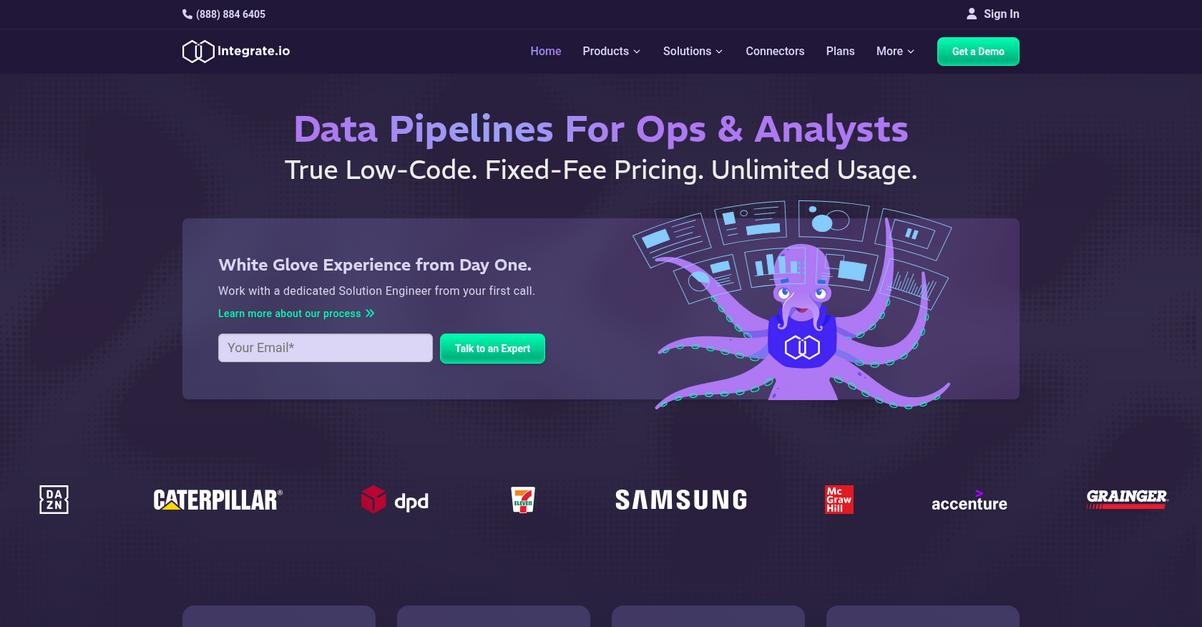
Tired of siloed data holding your business back?
Integrate.io offers a comprehensive platform for data pipelines, designed to automate your manual data preparation and processes. This means you can easily unify fragmented datasets.
You’ll find it simplifies complex digital infrastructures and handles growing data volumes across multiple platforms, helping you streamline data workflows and accelerate analytics.
It’s time to truly empower your teams.
Integrate.io solves common pain points like manual data entry and inconsistent data formats with its true low-code platform. This enables both technical and non-technical users to build and manage data pipelines with ease.
The platform includes powerful features like Salesforce Sync, allowing you to transform and load enriched data into Salesforce more effectively than other tools. Additionally, its Database Replication offers sub-60-second latency, ideal for powering real-time dashboards and AI/ML initiatives. Plus, with File Prep & Delivery, you can automate chaotic file-based workflows, transforming SFTP and Excel files into clean, usable outputs, ensuring consistent, accurate data accessible organization-wide.
The result is quicker, data-driven decisions.
Key features:
- True Low-Code Platform: Empowers both technical and non-technical users to easily build and manage data pipelines without extensive coding.
- Automated Data Pipelines: Streamlines manual data preparation and processes, including bidirectional Salesforce integration and file data sharing.
- Real-Time Data Replication: Offers sub-60-second latency for database replication, powering real-time dashboards and AI/ML initiatives.
Learn more about Integrate.io features, pricing, & alternatives →
Verdict: Integrate.io’s focus on true low-code capabilities and operational ETL use cases makes it a strong contender for the best data integration software. Its automated pipelines and dedicated support, as evidenced by a 92% customer satisfaction score, directly address the need for streamlined, accurate data and reduced IT overhead.
2. Boomi
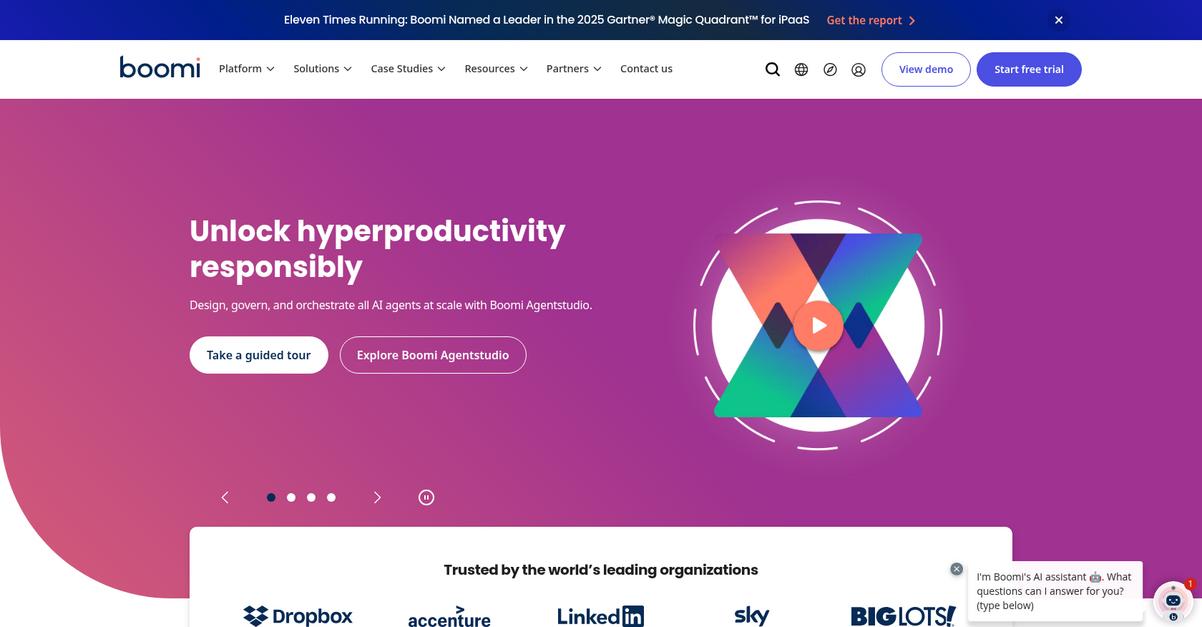
Struggling with fragmented data and complex integrations?
Boomi’s platform helps you connect applications and data to unify your diverse datasets. This means your IT team can reduce tech debt through smart integration.
You’re seeking streamlined workflows, and Boomi helps solve this by providing a single platform for integration, API, data, and AI Agent Management.
Boomi solves your data integration challenges by offering robust capabilities designed to manage data at scale. You can establish a foundation for trusted data to support your operational, analytical, and AI initiatives. Additionally, the platform provides automated ELT data pipelines, ensuring your data is ready for analysis and reporting without manual effort.
Plus, you can gain total control over your APIs, ensuring quality from design to retirement, and deliver battle-tested APIs engineered for real-world threats. The result is secure, synchronized, and trusted data, empowering your teams to make quicker, data-driven decisions.
If you’re also streamlining business processes, my article on digital signature software covers how to automate approvals securely.
Unlock hyperproductivity responsibly.
Key features:
- Integration & Automation: Connect your applications and data easily with AI agents and a vast library of over 1,500 pre-built connectors.
- Data Management: Establish a foundation for trusted data with automated ELT data pipelines and get a synchronized 360-degree view of your data.
- API Management: Design, secure, and manage APIs with complete control, enforcing quality and delivering battle-tested APIs for your business.
Learn more about Boomi features, pricing, & alternatives →
Verdict: With over 23,000 global customers, Boomi is consistently recognized as a leader, delivering a 410% ROI. Its AI-driven platform for integration, API, data, and AI Agent Management makes it the best data integration software for solving your complex data challenges and boosting productivity.
3. Informatica
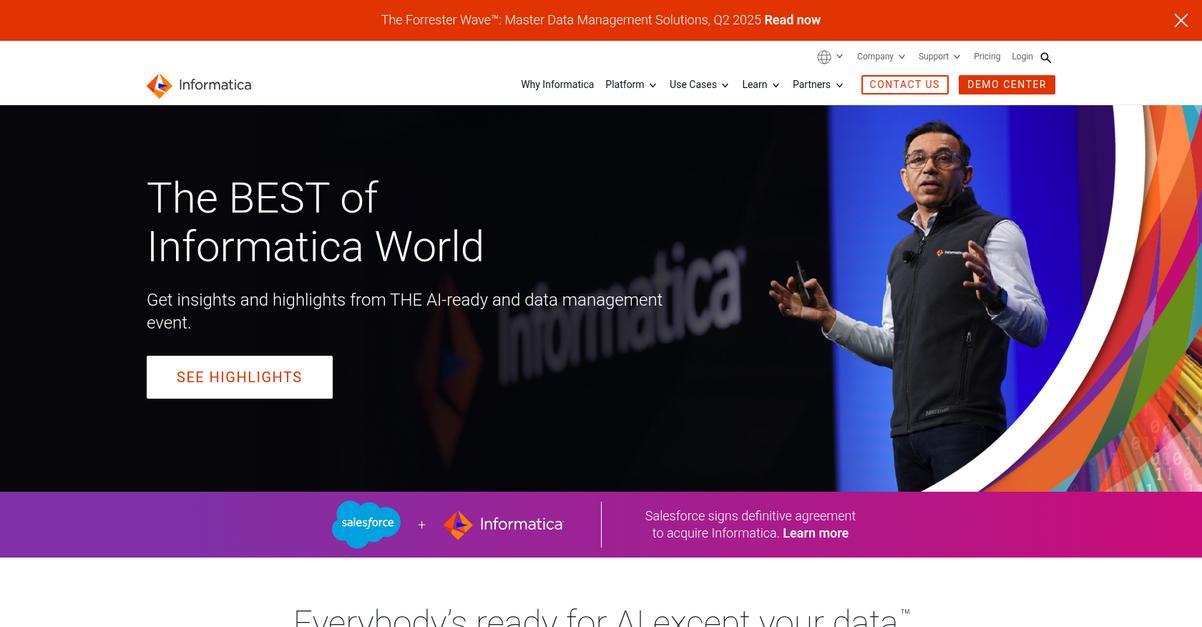
Struggling to make sense of your siloed data?
Informatica’s Intelligent Data Management Cloud (IDMC) is built to simplify access and automate those tough integration tasks.
This means you can say goodbye to fragmented datasets and inconsistent formats, as Informatica helps you manage the entire lifecycle of your data.
Here’s how your data can do more.
Informatica’s IDMC, powered by CLAIRE® AI, ensures your data is AI-ready, simplifying data access and automating labor-intensive tasks. You get enterprise-level scalability, security, and compliance, delivering measurable returns on your data investments with flexible pricing. You can reduce manual integration effort with GenAI Copilots. This integrated platform offers services like Data Catalog, Data Integration & Engineering, API & App Integration, and Data Quality & Observability, helping you establish greater trust in your data and create business value faster by putting the right data at everyone’s fingertips. This lets you optimize data investments while maintaining technical flexibility.
Informatica helps you deliver trusted data for analytics and AI.
If you’re also managing specific datasets, my article on best product data management software offers valuable insights.
Key features:
- Intelligent Data Management Cloud (IDMC): A multi-cloud and hybrid platform with over 50,000 metadata-aware connections, offering global scale, security, compliance, and flexible, consumption-based pricing.
- AI-Powered Automation (CLAIRE® AI): Automates labor-intensive data management tasks, ensuring AI-readiness and enabling real-time integration for streamlined workflows and faster decision-making.
- Comprehensive Data Services: Includes Data Integration & Engineering, Data Quality & Observability, Master Data Management (MDM), Governance, Access & Privacy, and a Data Marketplace for unified data control.
Learn more about Informatica features, pricing, & alternatives →
Verdict: Informatica’s IDMC is a leading platform designed to solve your complex data integration challenges. With its CLAIRE® AI and comprehensive data services, it empowers your teams to make quicker, data-driven decisions by providing consistent and accurate data, making it a strong contender for the best data integration software.
4. Talend
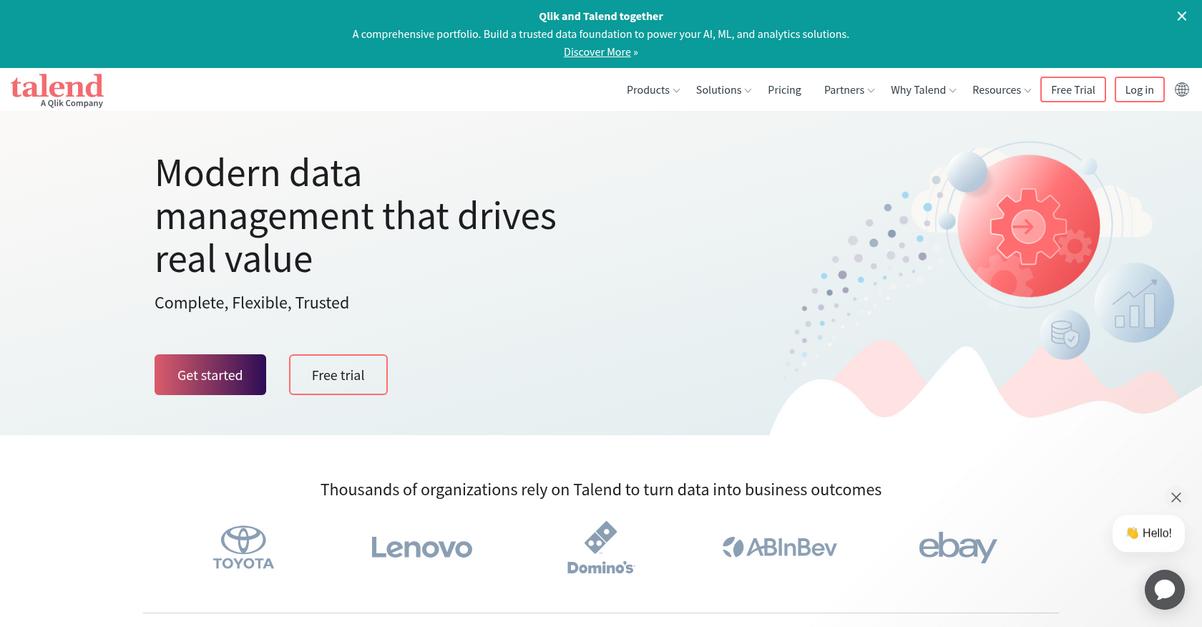
Struggling with [fragmented data across your organization]?
Talend’s unified platform, Talend Data Fabric, directly addresses this by combining data integration, quality, and governance. This means you can finally centralize your scattered datasets.
You might be dealing with cumbersome manual processes and inconsistent data formats, but Talend’s low-code platform simplifies your data environment. The result is a trusted data foundation that empowers your business.
Ready to transform your data?
Talend helps you overcome these challenges by providing an end-to-end data management solution, supporting integration to delivery across your entire organization. It’s incredibly flexible, letting you deploy on-premises, cloud, multi-cloud, or hybrid-cloud environments, ensuring it fits your existing infrastructure. This comprehensive approach streamlines data workflows, automating integration and delivering [consistent, accurate data]. Additionally, Talend has deep partnerships and integrations with top technology providers like AWS, Microsoft Azure, and Snowflake, helping you get even more value from your existing data ecosystem.
Your team can now make quicker, data-driven decisions.
Key features:
- Talend Data Fabric: A unified, low-code platform for data integration, data quality, and data governance, supporting virtually any data source and architecture.
- Flexible Deployment Options: Offers complete flexibility to deploy on-premises, cloud, multi-cloud, or hybrid-cloud environments, aligning with your current infrastructure.
- Robust Data Ecosystem: Provides deep partnerships and integrations with leading technology providers like AWS, Azure, and Snowflake to enhance data value.
Learn more about Talend features, pricing, & alternatives →
Verdict: Talend’s complete, flexible, and trusted platform tackles siloed data and complex infrastructures head-on. With features like the Data Fabric and extensive cloud integrations, it streamlines data workflows, making it the best data integration software to empower your teams with accurate data and boost decision-making.
5. Jitterbit
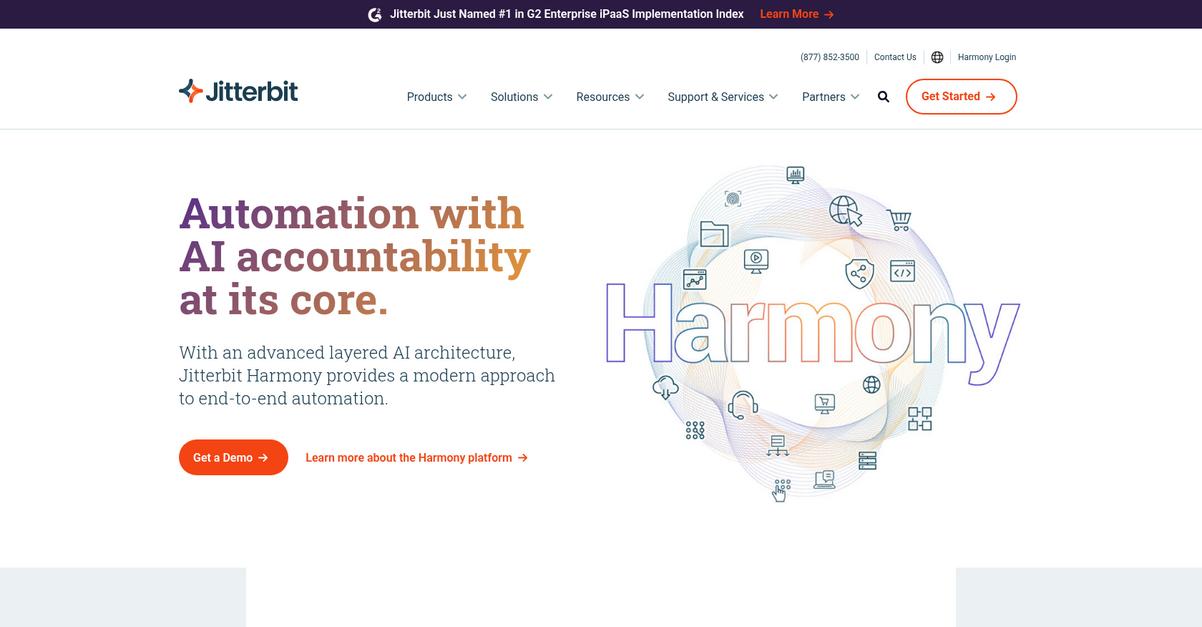
Struggling with fragmented data and slow decisions?
Jitterbit’s Harmony Platform simplifies your digital infrastructure, unifying siloed data with a low-code, AI-infused approach. This means you can integrate, orchestrate, and automate processes effortlessly.
This platform helps you overcome manual data entry and inconsistent formats, creating streamlined data workflows that accelerate operations.
It’s time for better data outcomes.
Jitterbit Harmony introduces an advanced layered AI architecture for end-to-end automation. This helps transform cumbersome integrations into automated processes.
You can seamlessly integrate thousands of applications, connecting your SaaS, on-premise, and cloud apps in just days. The drag-and-drop pre-built connectors make streamlining workflows and creating end-to-end process automation virtually effortless, empowering your teams. Jitterbit also provides dedicated tools like the Salesforce Data Loader and solutions for EDI and ERP integration to increase order processing efficiency and streamline trading partner communications, ensuring accurate and consistent data across your organization.
This makes data accessible, reliable, and drives quicker, data-driven decisions.
If you’re evaluating data solutions for healthcare, my guide on best patient engagement software covers essential tools.
Key features:
- AI-infused Harmony Platform: Offers a unified low-code environment for integration, orchestration, automation, and app development, simplifying complex data challenges.
- Drag-and-drop Pre-built Connectors: Facilitate effortless integration with thousands of SaaS, on-premise, and cloud applications, accelerating workflow automation.
- Specialized Solutions: Includes tools like Salesforce Data Loader and comprehensive EDI/ERP integration to automate data transfer and boost operational efficiency.
Learn more about Jitterbit features, pricing, & alternatives →
Verdict: Jitterbit’s AI-infused Harmony Platform and robust pre-built connectors address core pain points like data silos and manual processes, making it a strong contender for the best data integration software. Its focus on end-to-end automation and specialized tools helps your teams make quicker, data-driven decisions.
6. MuleSoft
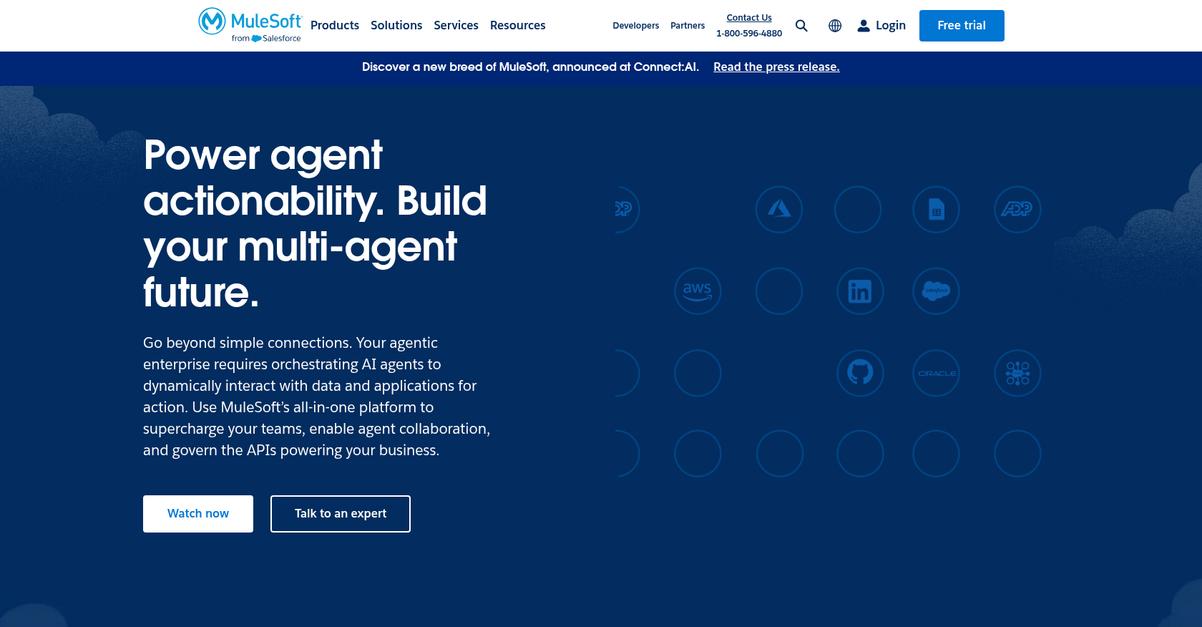
Are you tired of disconnected data holding you back?
MuleSoft offers a unified platform that connects your disparate systems, applications, and devices.
This means you can easily integrate data from various sources, breaking down silos and gaining a holistic view.
The result is smarter, faster decisions.
MuleSoft empowers you to connect data wherever it resides, from legacy systems to cloud applications, transforming your approach to data management. You can build reusable APIs and integrations, accelerating project delivery and fostering innovation across your organization. This streamlines operations, making your data more accessible and actionable.
Imagine automating workflows and connecting every customer touchpoint, ensuring consistent experiences and accurate insights. This means your IT teams spend less time on manual integration tasks and more time on strategic initiatives. Additionally, MuleSoft’s approach supports hybrid environments, giving you the flexibility to integrate on-premises and cloud data with ease, fueling business growth.
Your data can finally work for you.
Key features:
- Unified Platform: Connects systems, applications, and devices across your entire enterprise for comprehensive data access.
- API-Led Connectivity: Build reusable APIs that accelerate integration projects, enhancing agility and reducing future development time.
- Hybrid Integration: Seamlessly integrate data from both on-premises infrastructure and cloud services, adapting to your unique setup.
Learn more about MuleSoft features, pricing, & alternatives →
Verdict: MuleSoft is a powerful solution for data professionals seeking to unify fragmented datasets and automate workflows. Its API-led approach and support for hybrid environments make it suitable as a best data integration software, enabling teams to access consistent, accurate data and make quicker decisions without heavy IT overhead.
7. Fivetran
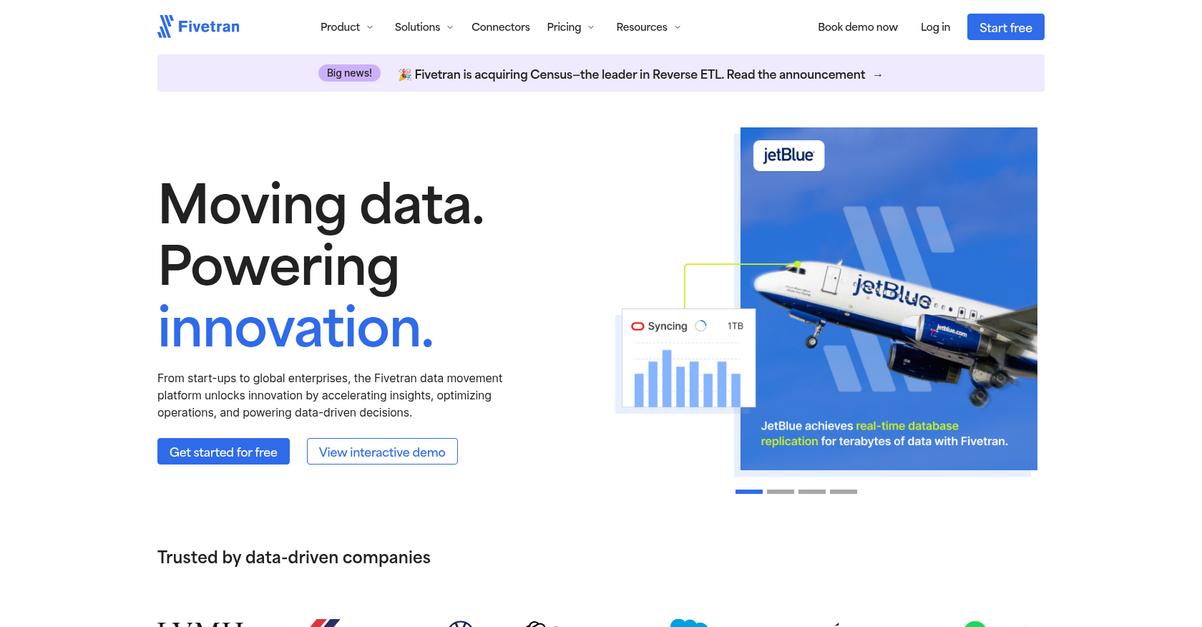
Struggling with fragmented data and slow insights?
Fivetran simplifies your data integration by automating pipelines from over 700 sources directly to your data warehouse or lake. This means you can centralize all your organizational data effortlessly.
You’ll gain consistent, accurate data accessible across your organization, allowing for accelerated insights and optimized operations.
Here’s how Fivetran delivers.
Fivetran is a single platform for all your data movement needs, transforming raw data into analytics-ready models with automated transformations. This capability helps you to streamline data workflows and ensure consistent data quality.
Additionally, Fivetran’s rigorous, built-in security and governance features mean you can move your data with peace of mind, knowing it’s protected and compliant. You can even deploy data pipelines in your own environment for specific security needs using their Hybrid Deployment option.
Plus, you can effortlessly connect to your customers’ data with their embedded solution, making data accessible without compromising on compliance, and power your AI innovation with reliable access to centralized, governed data. The result is real-time analytics and empowered teams.
While we’re discussing data’s role in boosting decisions, you might also find my guide on best marketing analytics tools useful for specific departmental insights.
Key features:
- Automated Data Movement: Reliably moves critical business data from 700+ sources including SaaS applications, databases, ERPs, and files to data warehouses and data lakes.
- Built-in Security & Governance: Provides rigorous security measures like private networks and robust governance with role-based access controls and metadata sharing.
- Scalable & Extensible Platform: Allows you to deploy data pipelines your way, build custom connectors for niche sources, and prepare data for analytics with Quickstart models.
Learn more about Fivetran features, pricing, & alternatives →
Verdict: Fivetran excels in unifying fragmented datasets and automating complex integrations, making it a strong contender for the best data integration software. Its ability to handle 22.2M+ schema changes and 156.5M+ pipeline syncs per month proves its reliability and scalability for organizations seeking to boost decisions and fuel growth.
8. Celigo
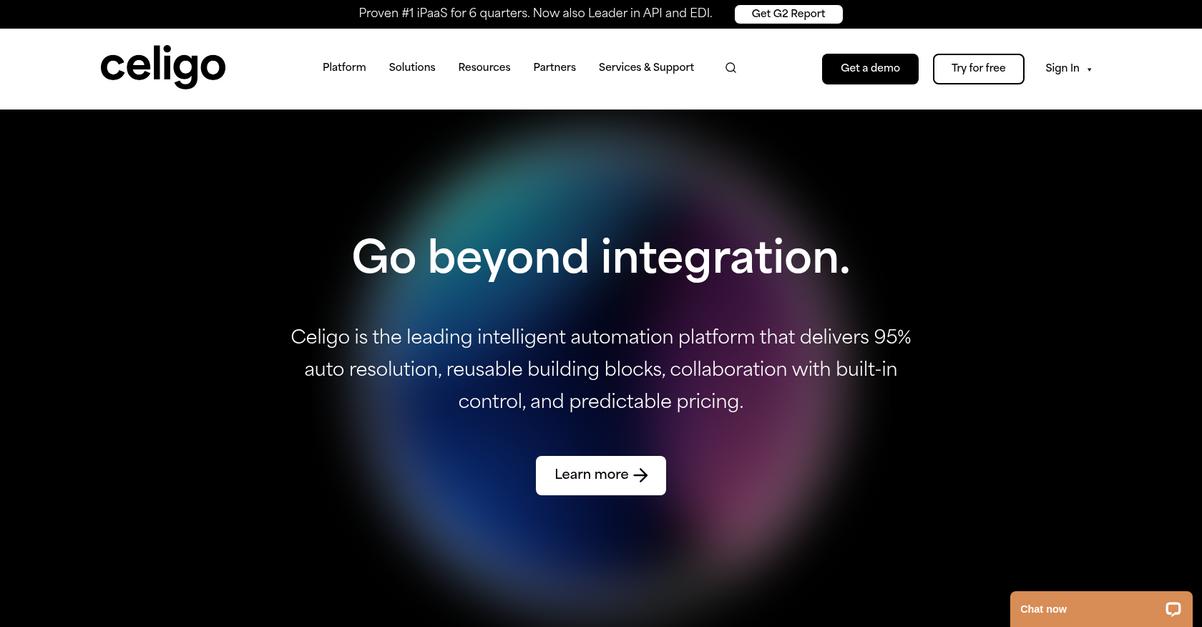
Struggling with fragmented data and endless manual integration tasks?
Celigo offers an intelligent automation platform designed to simplify your data workflows and boost decision-making.
This means you can unify fragmented datasets and maintain data quality without the usual IT overhead.
Ready to transform your data operations?
Celigo’s intelligent automation platform tackles challenges like siloed data and complex digital infrastructure, streamlining your entire process. The platform features 95% auto-resolution, using AI to identify, diagnose, and resolve most integration errors without manual intervention, which frees up your team. This means you can build workflows once and reuse logic across teams and systems, accelerating automation efforts. Additionally, its “one platform for all workflows” capability allows you to manage real-time, batch, file-based, API, and EDI integrations from a single interface, promoting reuse and eliminating the complexity of multiple solutions. You gain predictable pricing too, based on flows, endpoints, and transaction tiers, with no added cost for seasonal spikes or growth.
The result is consistent, accurate data across your organization.
If you’re also building a modern tech stack, my article on best headless ecommerce platforms covers flexible solutions.
Key features:
- Intelligent Automation Platform: Delivers 95% auto-resolution of integration errors using AI, significantly reducing manual intervention and improving data accuracy.
- Reusable Building Blocks: Allows you to build workflows and reuse logic, components, and connectors across different teams, processes, and systems.
- One Platform for All Workflows: Manages diverse integration types—real-time, batch, file-based, API, and EDI—within a single, unified user experience.
Learn more about Celigo features, pricing, & alternatives →
Verdict: Celigo’s intelligent automation platform is highly suitable as a best data integration software, enabling teams to automate processes and ensure consistent, accurate data. Its 95% auto-resolution and reusable building blocks directly address pain points like manual data entry and inefficient scaling.
9. SnapLogic
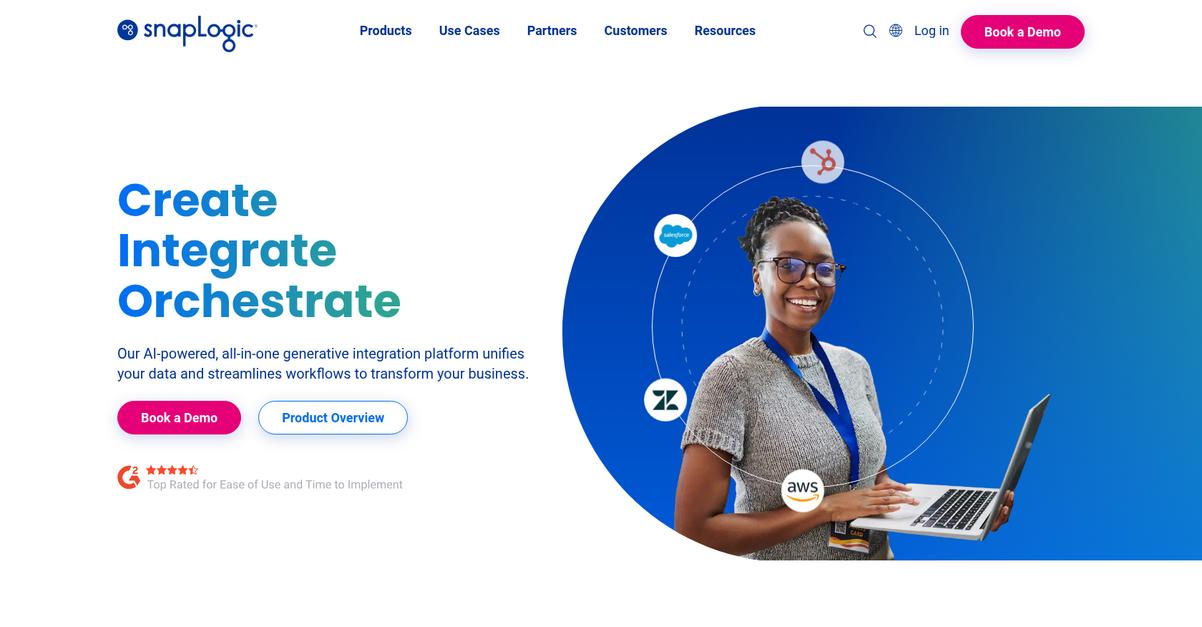
Struggling with siloed data and fragmented systems?
SnapLogic provides an all-in-one data and application integration platform designed to simplify your data workflows.
This means you can mobilize data to the cloud using visual ETL/ELT, ensuring your critical business information is unified and accessible.
The result? Streamlined data workflows.
SnapLogic solves complex integration challenges by connecting every application with its no-code/low-code iPaaS solution. This platform empowers your teams to automate across various functions, including HR, sales, IT, marketing, and finance.
You’ll find over 1,000 pre-built integrations, called Snaps, which allow for code-free creation of simple or complex business processes. Additionally, features like SnapLogic AI and SnapGPT act as an integration copilot, helping you build enterprise-grade agents, assistants, and automations. This generative integration approach helps you modernize legacy systems and achieve enterprise-wide automation.
This empowers quicker, data-driven decisions.
Key features:
- AI-powered generative integration: Unifies your data and streamlines workflows, enabling you to build enterprise-grade agents and automations effortlessly.
- Pre-built Snaps (1,000+): Facilitates code-free integrations for automating complex business processes across applications, databases, and APIs.
- No-code/Low-code iPaaS: Connects all your applications, allowing your team to automate workflows across HR, sales, IT, marketing, and finance.
Learn more about SnapLogic features, pricing, & alternatives →
Verdict: SnapLogic stands out as the best data integration software, leveraging its AI-powered generative integration and extensive pre-built Snaps to automate workflows and unify fragmented datasets. This simplifies data management and empowers your teams to make accurate, data-driven decisions swiftly, with a reported 181% ROI for users.
10. Tray.io
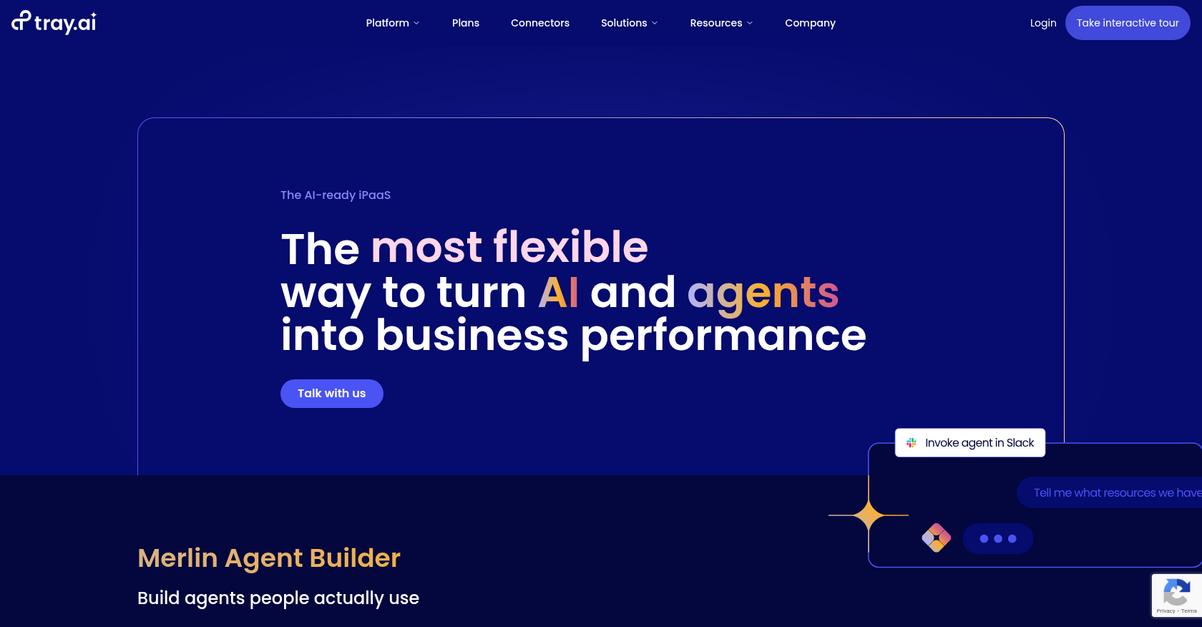
Struggling with fragmented data and slow decisions?
Tray.io offers an AI-ready iPaaS solution to simplify your complex digital infrastructure. This means you can finally unify disparate datasets and automate workflows.
It tackles the pain points of manual data entry and cumbersome integrations, enabling your teams to deploy powerful AI agents and streamline data management. The result? Quicker, data-driven decisions and empowered teams.
Here’s how Tray.io achieves this.
You can infuse AI directly into your business processes, accelerating integration and automation delivery. This platform provides a low-code, AI-augmented builder, allowing your business technologists and developers to achieve 10X faster results.
Your organization can leverage data across your entire stack safely. The Enterprise Core ensures governance and scalability for everything you build, while Merlin Guardian protects sensitive data during AI processes. You can even automate IT onboarding, intelligent lead management, and deploy autonomous support agents.
This platform helps you adapt to new AI capabilities in minutes with its AI Palette, a significant leap from legacy iPaaS solutions that measure development time in months.
You’ll gain business value that truly wins.
If you’re also looking into skill development, my article on best digital education platform covers essential tools for elevating learning.
Key features:
- AI-ready iPaaS: Provides a composable platform for driving all AI, integration, and automation initiatives from one central location.
- Merlin Agent Builder: Allows you to build and deploy intelligent AI agents that take action across your existing systems, retaining context and memory.
- Enterprise Core & Merlin Guardian: Ensures trusted AI data integration with robust governance, scalability, and protection for sensitive data in AI processes.
Learn more about Tray.io features, pricing, & alternatives →
Verdict: Tray.io stands out as a best data integration software due to its AI-ready iPaaS, which enables rapid automation and intelligent agent deployment. Its focus on security and governance, combined with low-code capabilities, makes it ideal for unifying data, streamlining workflows, and empowering your teams to make faster, more informed decisions.
Conclusion
Data chaos slowing you down?
Choosing the right tool feels impossible. You need a platform that can unify scattered data without overwhelming your team with technical complexity or high costs.
The right solution makes a huge impact. Research shows a good platform improves data accuracy by 40% and reduces manual workflows by 35%. This fundamental shift empowers your entire team to act decisively on trusted, real-time information.
So, what’s my top recommendation?
From my experience, integrate.io is the clear winner. It directly tackles data silos and automates painful manual workflows with its true low-code platform.
What I love is how its true low-code platform empowers non-technical users to build their own pipelines. This is why it’s the best data integration software for most teams.
For additional insights, my analysis of PCI compliance software provides valuable perspectives on securing your data.
I strongly suggest you start a free trial of Integrate.io and see how easily you can finally unify your scattered data.
Your team will make better decisions, faster.






